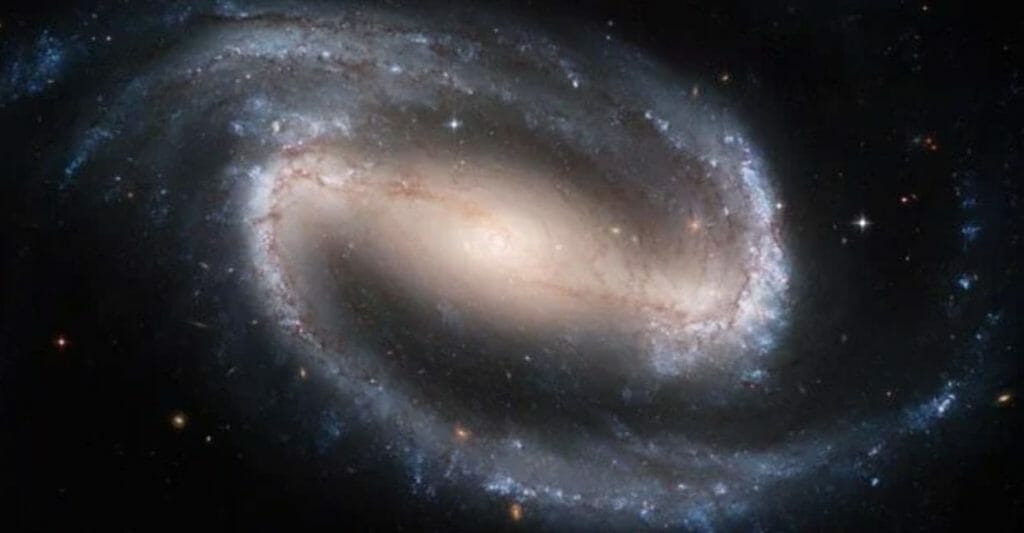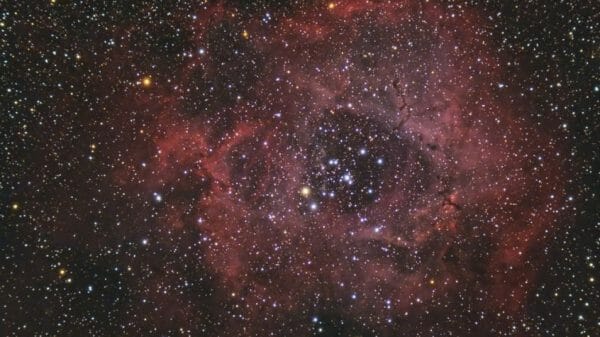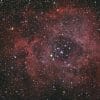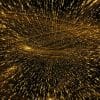In a jaw-dropping celestial revelation, international stargazers have unveiled a galaxy, swathed in a cosmic ‘ribbon,’ courtesy of a high-powered telescope in the possession of CSIRO, Australia’s national science juggernaut.
Frontlined by the brilliant minds of Dr. Nathan Deg and Dr. Kristine Spekkens from the hallowed halls of Queen’s University in Canada, this celestial odyssey bears the co-authorship of CSIRO‘s very own Professor Bärbel Koribalski. Feast your eyes upon the resplendent spectacle known as NGC 4632, a staggering 56 million light years removed from our humble abode.
Intriguingly, NGC 4632, having pranced onto the scene, is strutting its stuff as a potential polar ring galaxy—a cosmic maven, if you will, among the enigmatic elite of our universe.
Enter the scene-stealer: CSIRO’s ASKAP radio telescope, basking in the majesty of Wajarri Yamaji Country, Western Australia, detected this celestial siren. NGC 4632 boasts a majestic gas ring, an ethereal entity only visible when peering through the cosmic lens of radio wavelengths. This ring, with its orbits dancing at right angles to the galaxy’s spiral disk, resembles nothing less than a cosmic parcel, wrapped tenderly in ribbons of gas, stardust, and twinkling luminaries.
Dr. Nathan Deg, sharing the limelight as a co-author of the paper gracing the Monthly Notices of the Royal Astronomical Society today, could hardly contain his excitement, exclaiming, “The findings suggest that one to three percent of nearby galaxies may have gaseous polar rings, which is much higher than suggested by optical telescopes. Polar ring galaxies might be more common than previously thought. While this is not the first time astronomers have observed polar ring galaxies, NGC 4632 is the first observed with ASKAP and there may be many more to come.”
Professor Koribalski, the sage of celestial exploration, added, “The WALLABY survey aims to observe the whole southern sky using ASKAP to detect and visualize the gas distribution in hundreds of thousands of galaxies. NGC 4632 is one of two polar ring galaxies we’ve identified from 600 galaxies that were mapped in our first small WALLABY survey. Using ASKAP over coming years we expect to reveal more than 200,000 hydrogen-rich galaxies, among them many more unusual galaxies like these ones with polar rings.”
The enigma of polar rings continues to baffle our star-gazing scholars. One theory proposes that these stellar rings, cleverly camouflaged within nebulous gas clouds, may be the remnants of a celestial drive-by—a cosmic hit and run.
Another tantalizing possibility is the ebb and flow of hydrogen gas, tracing the intricate threads of the cosmic web, weaving itself into a radiant ring around galaxies, perhaps even birthing stars in this mesmerizing cosmic ballet.
In the grand cosmic theater, polar ring galaxies could be the protagonists of a new cosmic chapter, delving deep into the cosmos and offering insights into the mysteries of dark matter. These captivating rings might unveil the hidden secrets of the enigmatic substance, opening a Pandora’s box of cosmic revelations.
A harmonious symphony of over 25 global collaborators from the farthest reaches of Canada, Australia, South Africa, Ecuador, Burkina Faso, Germany, China, and beyond, embarked on this celestial quest. Together, they meticulously analyzed data culled from the maiden voyage of the WALLABY survey, as ASKAP’s mighty eye probed the heavens. The data, a cosmic puzzle, was artfully stitched together by the wizards at the Pawsey Supercomputing Research Centre, a beacon of computational prowess in Western Australia.
ASKAP, proudly a part of CSIRO’s Australia Telescope National Facility, also charts a trail to the future. It’s a prelude to the international SKA telescopes, emerging like cosmic titans in the lands of Australia and South Africa. The celestial saga continues, unveiling the cosmos in all its bewildering splendor.










